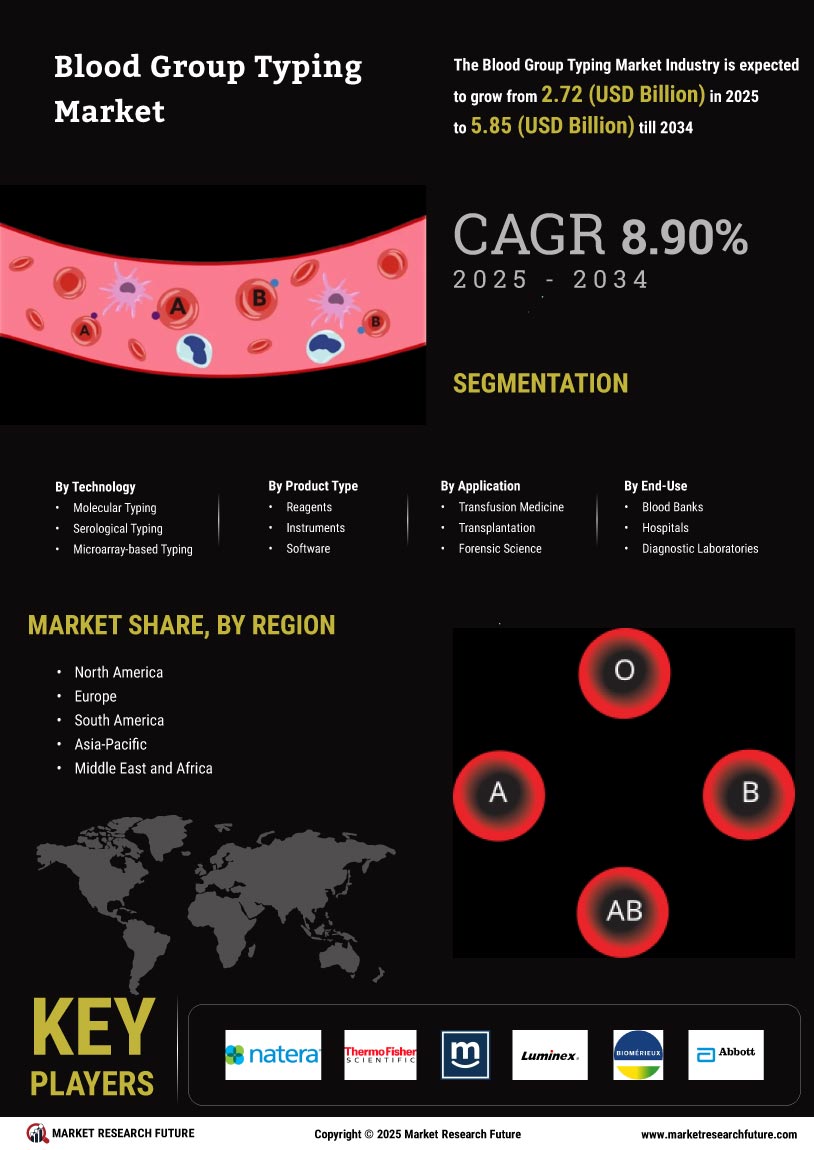Increase in Surgical Procedures
The global rise in surgical procedures, including elective surgeries and organ transplants, significantly influences the Global Blood Group Typing Market Industry. As surgical interventions become more common, the need for compatible blood products escalates, necessitating accurate blood typing. According to health statistics, millions of surgeries are performed annually, each requiring precise blood group identification to prevent complications. This trend underscores the critical role of blood typing in surgical settings, thereby driving market demand. The anticipated growth in surgical procedures is likely to further bolster the market's expansion.
Growing Awareness of Blood Donation
The rising awareness regarding the importance of blood donation is a key driver for the Global Blood Group Typing Market Industry. Campaigns and initiatives by governments and non-profit organizations aim to educate the public about the critical need for blood donations, particularly in times of crisis. This heightened awareness leads to increased blood donations, necessitating efficient blood typing to ensure compatibility. As more individuals participate in blood donation drives, the demand for blood typing services is expected to surge, thereby contributing to the market's growth trajectory.
Regulatory Support for Blood Safety
Regulatory bodies worldwide are increasingly emphasizing blood safety and quality standards, which directly impacts the Global Blood Group Typing Market Industry. Governments are implementing stringent regulations to ensure the safety of blood products, thereby necessitating accurate blood typing. Compliance with these regulations requires healthcare facilities to invest in reliable blood typing technologies and services. As a result, the market is expected to benefit from this regulatory support, as healthcare providers prioritize patient safety and adhere to established guidelines, ultimately driving market growth.
Rising Demand for Blood Transfusions
The increasing prevalence of chronic diseases and surgical procedures drives the demand for blood transfusions, thereby propelling the Global Blood Group Typing Market Industry. As healthcare systems worldwide strive to enhance patient outcomes, the need for accurate blood typing becomes paramount. For instance, the World Health Organization reports that millions of blood transfusions are conducted annually, necessitating precise blood group identification. This trend is expected to contribute to the market's growth, with projections indicating a market value of 2.49 USD Billion in 2024, and a potential rise to 6.37 USD Billion by 2035, reflecting a robust CAGR of 8.92% from 2025 to 2035.
Technological Advancements in Blood Typing
Innovations in blood typing technologies, such as molecular typing and automated systems, are transforming the Global Blood Group Typing Market Industry. These advancements enhance the accuracy and efficiency of blood group determination, reducing the risk of transfusion reactions. For example, the introduction of next-generation sequencing has enabled rapid and precise blood typing, which is crucial in emergency situations. As healthcare facilities increasingly adopt these technologies, the market is likely to expand significantly. The integration of advanced technologies not only improves patient safety but also streamlines laboratory workflows, further driving market growth.

















Leave a Comment